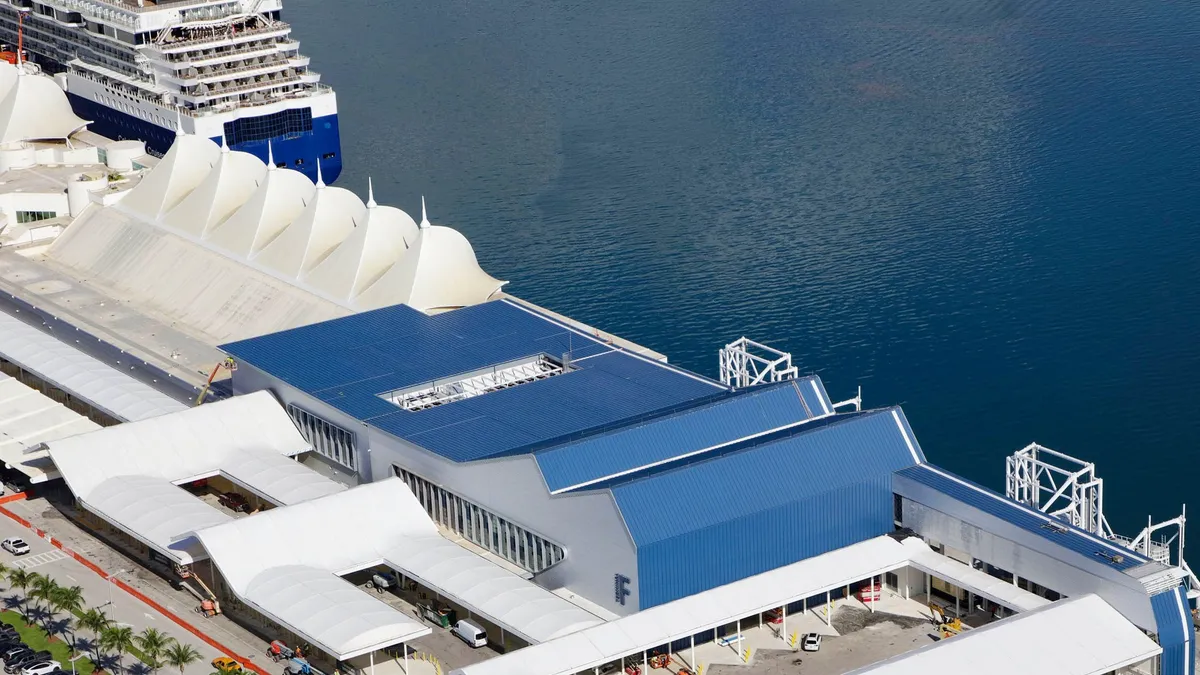Shift from a rebuild to a reuse mindset
From facing severe weather challenges to reducing energy consumption, property developers and managers have long trusted the proven resilience, versatility and durability of metal roofs —especially those crafted from steel. Now, the entire construction industry and end users are also quickly becoming aware that metal roofs can play a significant role in larger retrofit projects, enabling the adaptive reuse of a building, rather than a teardown, says Ben Soumis, General Manager of Aftermarket Parts and Retrofits at BlueScope Buildings North America.
Retrofits upgrade or modify existing buildings to enhance their performance, energy efficiency, safety or overall functionality, to extend the lifespan of a structure, reduce environmental impact and meet contemporary standards for safety, energy efficiency and functionality — all without the need for complete reconstruction.
Soumis notes that as construction’s mindset shifts toward greater investment in sustainability and consideration of the total cost of building ownership over time, more people want to revitalize their buildings through retrofitting instead of rebuilding.
"Steel is probably the most sustainable roofing choice out there; it's 100% recyclable, ensuring a closed-loop life cycle."
Cost benefits of metal retrofitting
While upfront costs often dominate budget discussions, a retrofitted metal roof's lifelong reduction of energy costs is also worth considering, says Soumis. Reflective coatings on metal roofs reduce cooling loads, enhancing energy efficiency. He explains that metal roofs are also easier for solar panel installation, providing additional economic and energy savings.
“Most solar panels are going to last about 30 years. And if you're putting up some of those alternative roofing choices, you may get 20 years before you have to replace that roof and those solar panels.” This means shortchanging the life of your solar panel by almost a decade. Whereas, retrofitting an older building involves adding a new roof layer and providing added insulation (increasing the R-value) without dismantling the original roof, which may or may not be metal. This approach saves time, reinforces the structure’s efficiency, and prolongs the life of any additions — like solar panels.
Paul Buettell, Roof Sales Manager at Butler Manufacturing, also underscores the significance of uninterrupted business operations during retrofitting. The streamlined process of prefabricated metal reroofing ensures minimal disruption, a crucial factor for building owners.
“When a building owner finds out they don’t have to lose business days to tear up a roof and they can add more insulation, it’s a huge realization,” says Buettell.
The design versatility of metal roofs
The advantages of metal retrofits extend beyond sustainability, as they’re proven to be versatile, aesthetically unique and can dramatically enhance a building’s appearance.
Take Terminal F at the Port of Miami, a monumental retrofit project executed by Lemartec and manufactured by Varco Pruden Buildings. Despite the complexity of the project, involving continuous operations, structural changes and unifying the appearance of multiple roofs, the result was a 2023 Building of the Year.
James Partridge, Estimating Manager at Lemartec, notes the modern and dramatic prefabricated steel roof played a pivotal role in Terminal F’s success. Its deep blue color, strong peaks and unique design contributed to its architectural differentiation.
“The project was quite complex,” Partridge explains, “because the terminal had to stay operational throughout the renovation — even as one structure was demolished, two new structures were added, and the team was tasked with making the commercial roofs of several buildings appear as though they were one.”
“This roof is visible from the cruise ships, so the top roof had to look good because it was all going to be visible.”
In addition to the aesthetics, efficiency and sustainability benefits of metal reroofing for individual properties, there’s also significant value to be achieved in our collective fight against climate change.
A retrofit mindset can help the world reach net-zero targets
A recent JLL research report underscores the pivotal role of retrofitting in achieving net-zero targets. With approximately 80% of today's office buildings anticipated to still be in use in 2050, retrofitting presents a significant opportunity for carbon reduction.
According to the report, a holistic retrofitting strategy is a highly effective way to decarbonize existing buildings, especially considering retrofit carbon emissions are potentially only a third of what new builds release into the environment.
As the global call for reduced carbon emissions grows louder, shifting to a retrofit mindset can not only address immediate challenges but also contribute to a more sustainable and resilient future for commercial and industrial buildings.










